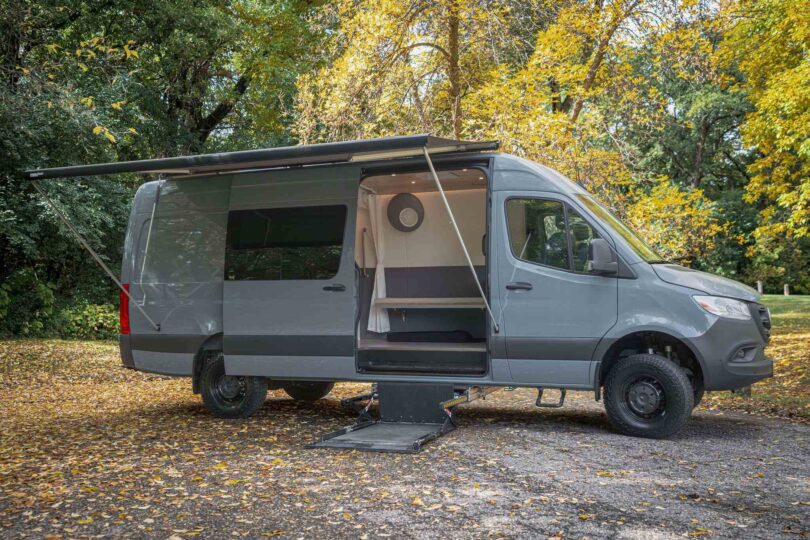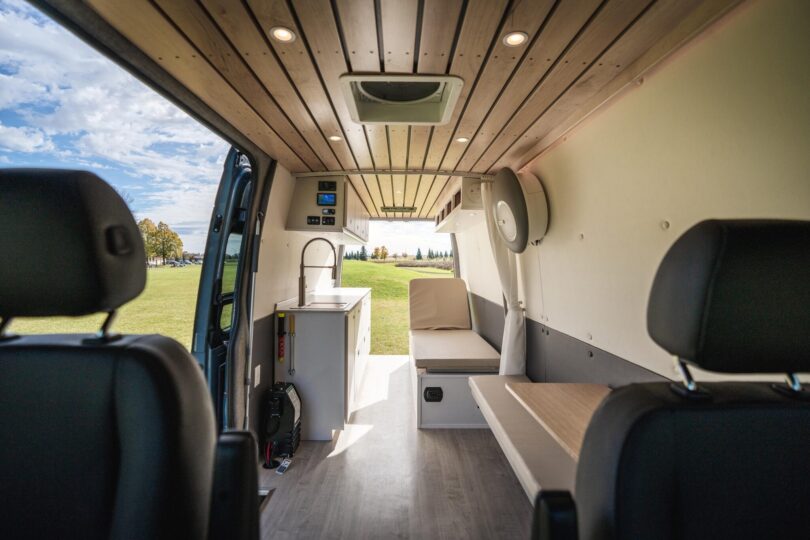The Complete Guide to Launching a Mobile Medical Clinic
Bringing Quality Healthcare Directly to Communities
At Vanna Mobile Medical, we believe that healthcare should be accessible to everyone, no matter where they live. Mobile medical clinics make this possible by delivering essential healthcare services to underserved populations, rural areas, and urban communities in need.
If you’re considering starting your own mobile medical practice, you’re in the right place. This guide is designed to provide you with a clear roadmap for launching a successful mobile healthcare program, from defining your mission to selecting the right vehicle and navigating regulatory requirements.

Vanna MMU on Mercedes Sprinter AWD w/ BraunAbility UVL Wheelchair Lift
What is a Mobile Medical Clinic?
A mobile medical clinic is a specialized vehicle outfitted with medical equipment, technology, and supplies to provide high-quality healthcare services outside of traditional brick-and-mortar facilities. These clinics bring care directly to the communities that need it most, whether for preventive screenings, urgent medical needs, or specialty services.
Types of Mobile Medical Clinics:
- Primary Care
- Medical Outreach & Street Medicine
- Urgent Care
- Dental Services
- Women’s Health & Mammography
- Testing & Screening
- Laboratory Services
- Audiology
- Mental Health Support
- Disaster & Emergency Response
- Prenatal/Postnatal Care
- Non-Emergency Medical Transport
Key Benefits of Mobile Clinics:
- Expanding Healthcare Access – Serving patients where they are, reducing barriers to care.
- Cost-Effective Model – Lower overhead costs compared to a physical clinic.
- Flexible & Scalable – Adjust services and locations based on demand.
- Community Impact – Builds trust and long-term relationships with patients.
- Revenue Generation – Multiple funding options, from grants to insurance billing.
Step 1: Define Your Vision & Assemble Your Team
Who Will You Serve?
Understanding your target population is the first step in building a successful mobile healthcare program. Research local health disparities, demographic needs, and gaps in service to determine where your clinic can have the greatest impact.
Where Will You Operate?
Identify key locations where your clinic will provide services. Consider:
- Rural areas with limited healthcare access.
- Urban neighborhoods with high demand for affordable medical care.
- Partnerships with local organizations to reach specific populations.
Building Your Team
A strong, passionate team is essential. Consider hiring:
- Licensed healthcare professionals (physicians, nurse practitioners, RNs, etc.).
- Support staff for patient intake, scheduling, and community outreach.
- A program coordinator to manage logistics and operations.
Step 2: Selecting & Equipping Your Mobile Medical Unit
The choice of your mobile medical unit is critical to your clinic’s success. Your vehicle should meet your specific operational and financial needs while ensuring patient comfort and efficiency.

Vanna MMU with Modern Interior Finish
Essential Equipment & Features:
- Reliable Power System
- Reliable and effective climate control
- Medical-grade refrigeration for vaccines and samples if needed
- Telehealth capabilities
- Secure storage for supplies and medications
- ADA-compliant access if needed
Warranty & Inspection Checklist:
Before finalizing your purchase, thoroughly review warranty terms and conduct a detailed pre-inspection, including:
- Mechanical reliability
- Equipment functionality
- Maintenance history
- Overall vehicle condition
Step 3: Plan Your Operations & Funding Strategy
Funding Your Mobile Clinic
Financial planning is crucial to sustaining your program long-term. Consider:
- Grants & Donations – Government, nonprofit, and private funding sources.
- Insurance Reimbursements – Medicaid, Medicare, and private insurance billing.
- Corporate Sponsorships & Partnerships – Local businesses and healthcare networks.
- Sliding Scale & Membership Models – Offering affordable care to self-pay patients.
Marketing & Community Outreach
To ensure a successful launch, develop a strong marketing plan:
- Brand Your Vehicle – A professionally wrapped vehicle creates visibility and brand recognition.
- Leverage Digital & Social Media – Use social platforms and a website to inform potential patients.
- Partner with Community Organizations – Work with local clinics, shelters, and nonprofits to establish trust and referrals.
- Host Events & Health Screenings – Increase awareness and engage with the community.
Navigating Regulatory & Licensing Requirements
Before hitting the road, ensure compliance with:
- State & Federal Healthcare Regulations
- Licensing & Permits for mobile medical operations
- HIPAA Compliance for patient data protection
- OSHA Standards for workplace safety
Bringing Healthcare to the People
Launching a mobile medical clinic is a powerful way to improve healthcare accessibility, strengthen communities, and create a sustainable business model in the healthcare industry. At Vanna Mobile Medical, we are committed to helping healthcare providers bring their vision to life with customized, high-quality mobile medical solutions.
If you’re ready to take the next step, reach out to us today to explore how we can support your journey to launching a mobile clinic that makes a lasting impact!
